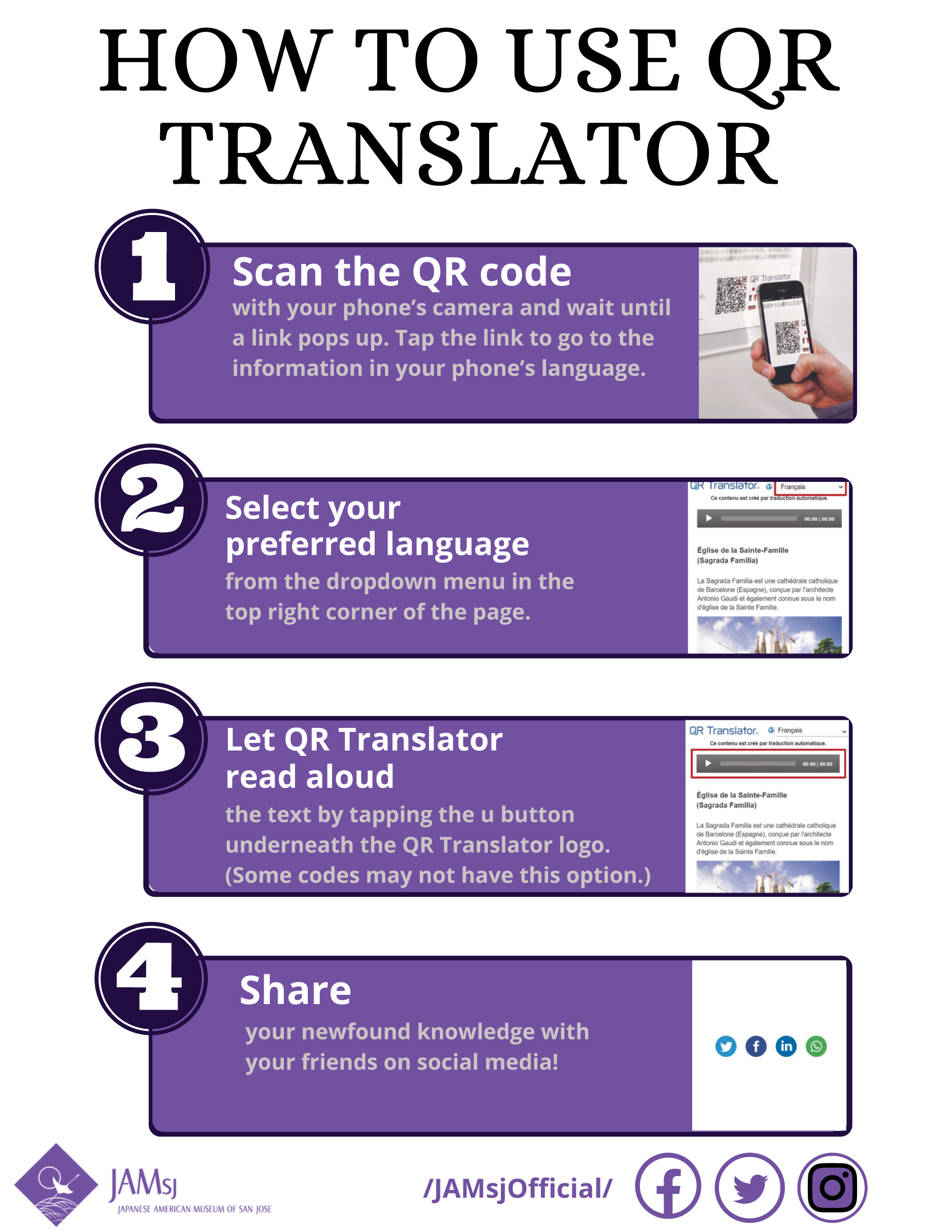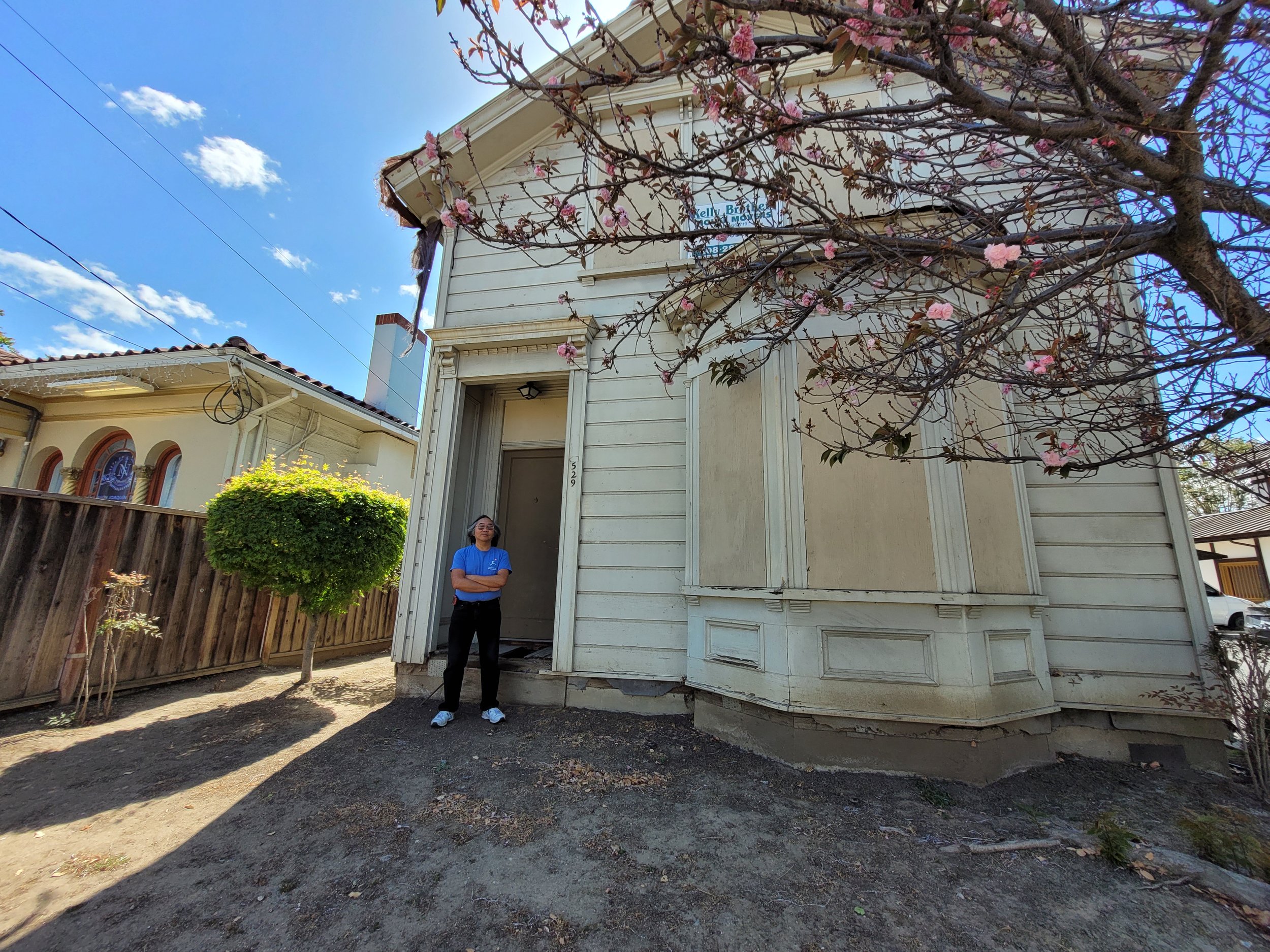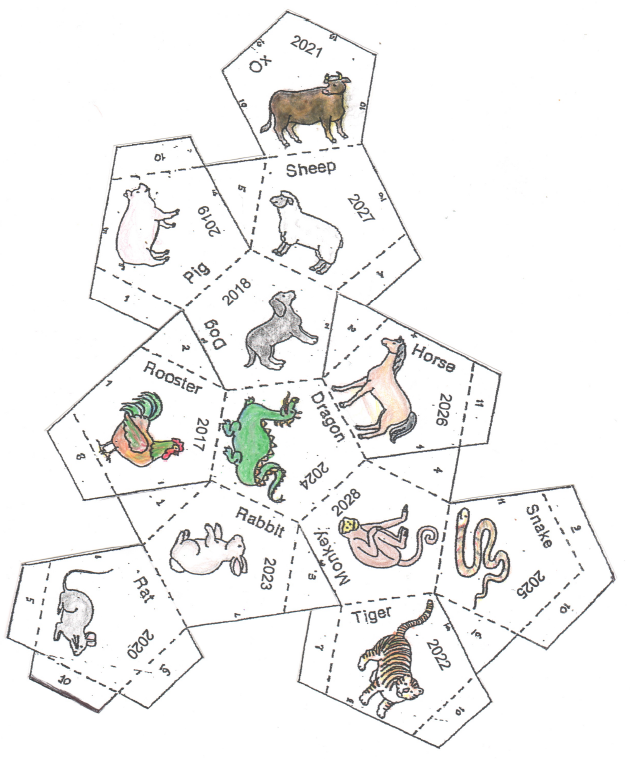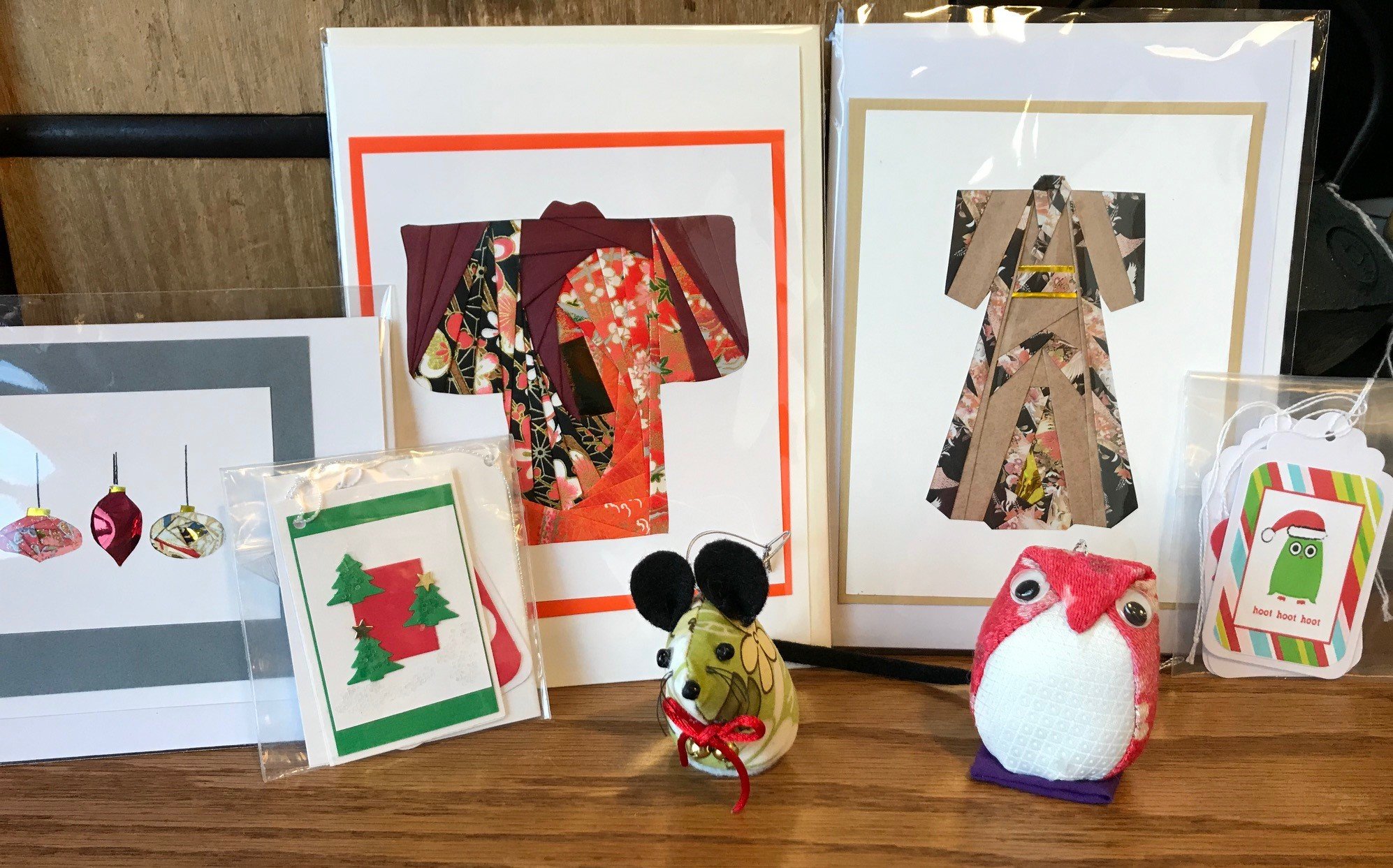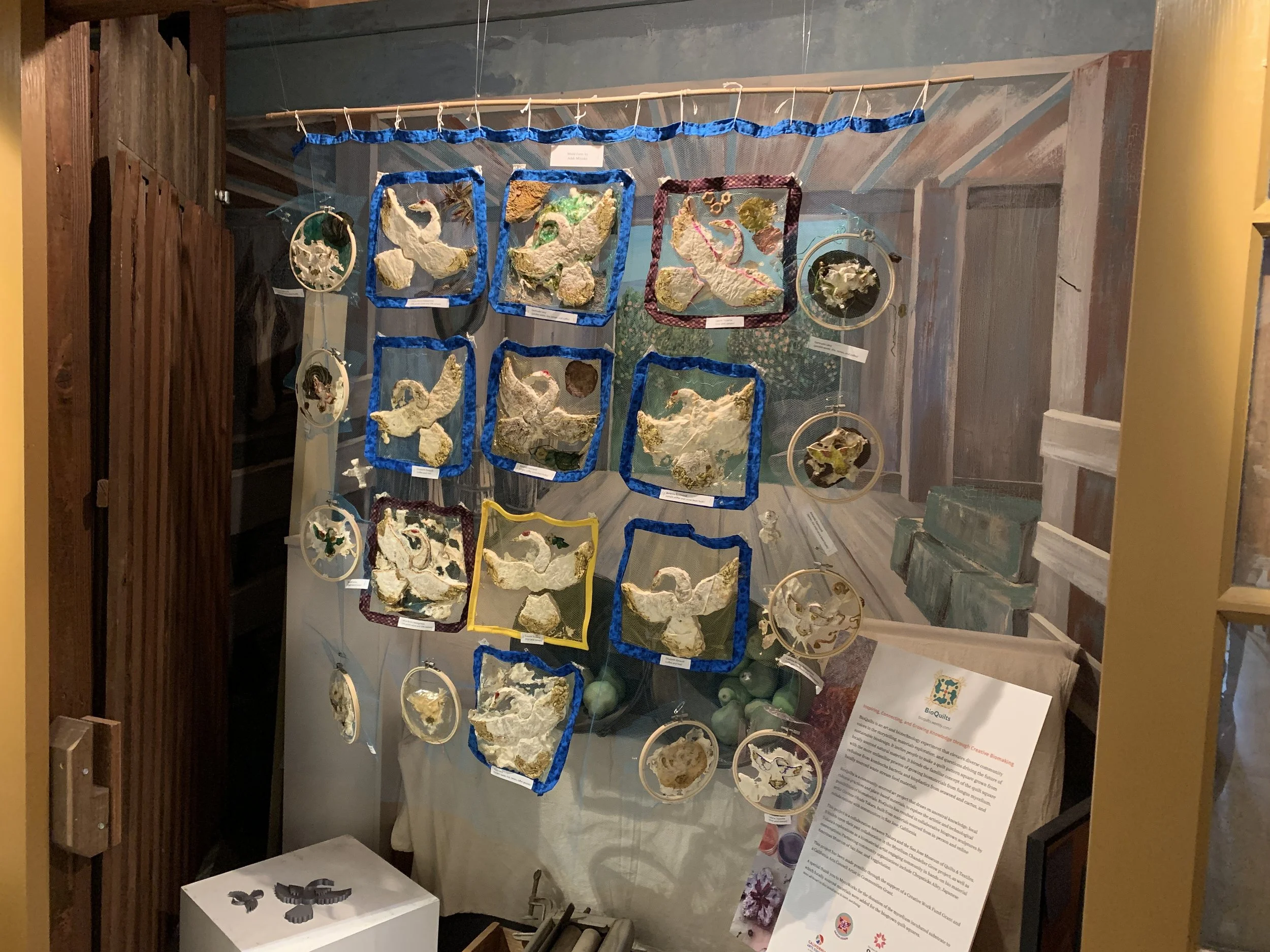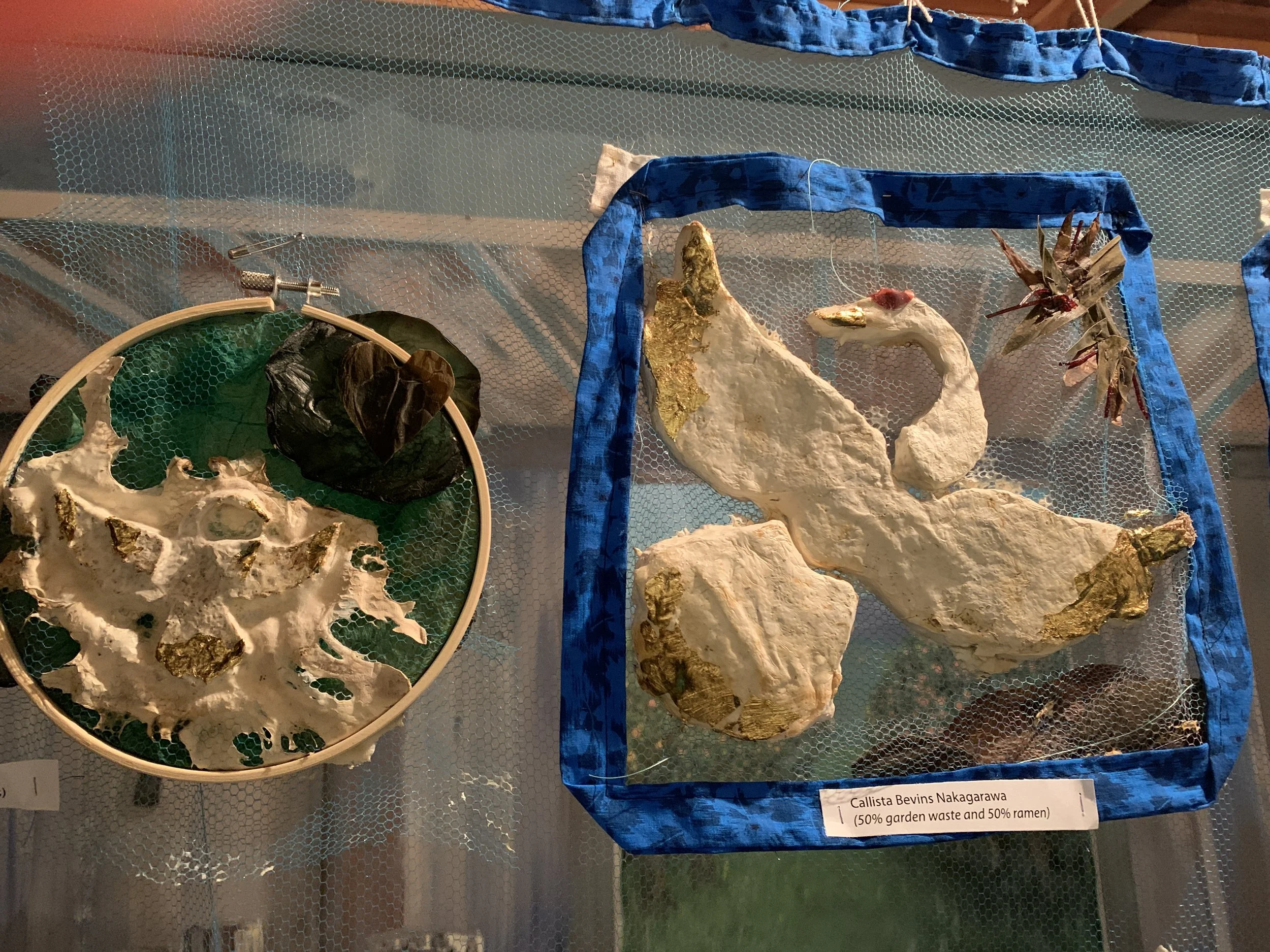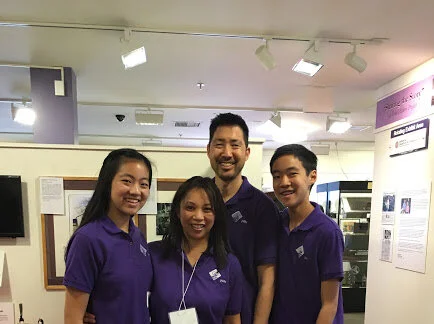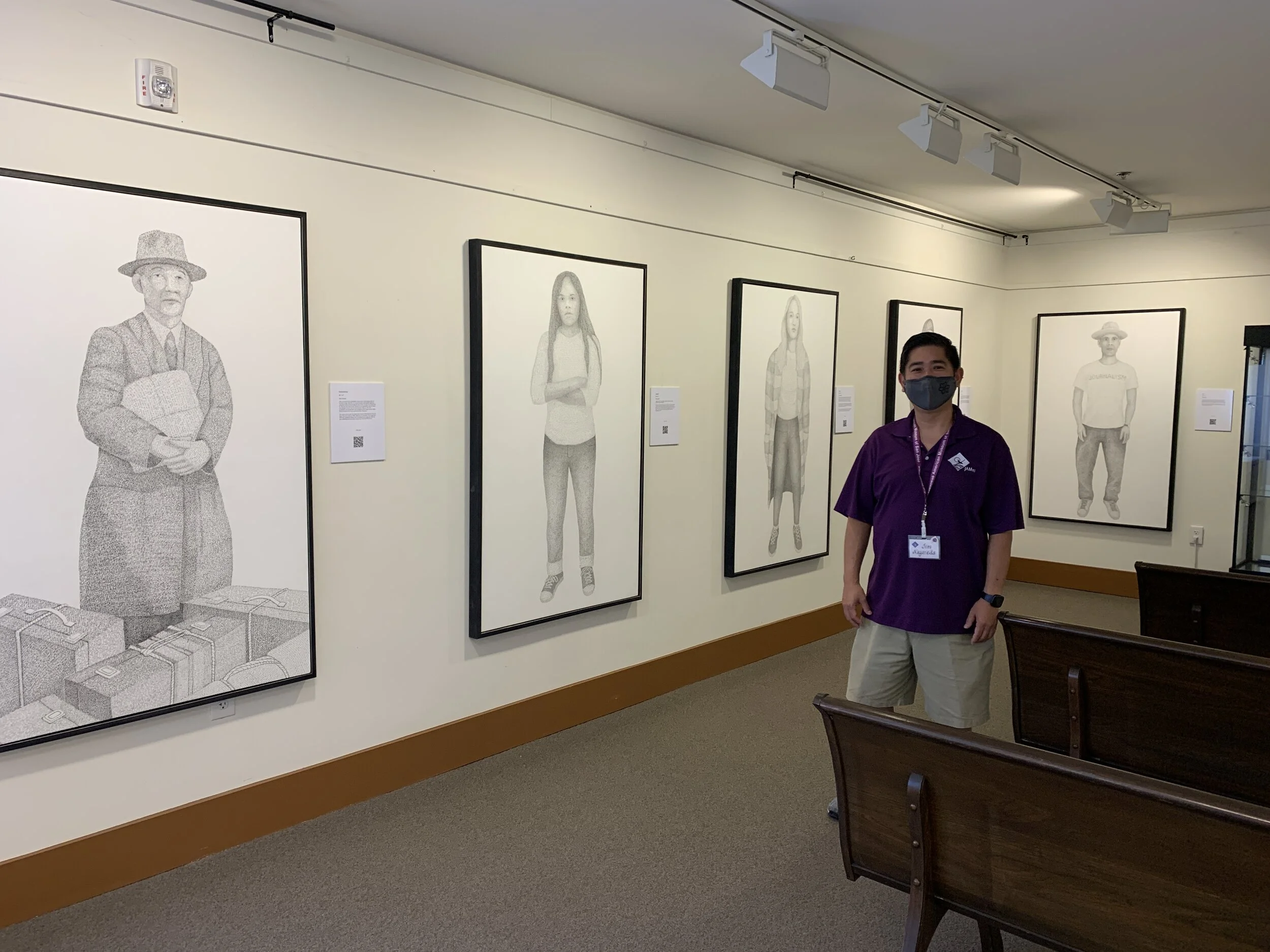Credit: Yukikazu Photography
Despite having lived in Japan for 18 years, my attempts to translate the agricultural area at the Japanese American Museum of San Jose (JAMsj) for Yoko, my mother-in-law, had produced more confusion than enlightenment. Miming broccoli picking and bunching was not clarifying the topic! Imagine our joy when on our most recent visit to the museum, we discovered the newly installed QR Translator placards. With a simple click on her cell phone, an explanation in Japanese appeared. Within seconds a “now-I-get-it look” crossed Yoko’s face!
The new QR Translator placards are yet another example of the projects that were able to move forward despite the closure of the museum during the pandemic. With the QR Translator, JAMsj is able to work with technology in new and exciting ways to share the museum’s story with a wider audience. I spoke with Michael Sera, board president, and several of the QR Translator project team members about the installation.
Michael, can you describe the museum’s project with QR Translator?
By installing QR Translator, JAMsj aims to help visitors gain a deeper understanding of the history of Japanese Americans and improve accessibility and inclusivity for a much larger audience.
According to the QR Translator website, this cloud service makes translating printed materials into multiple languages simple and easy. After content is digitized, translated, and post edited, a QR code is generated. When scanned, the QR code can direct the visitor to the appropriate translation based on their phone’s language settings.
The museum will implement QR Translator in phases to include 50 display placards available in 15 languages!
Michael, how did this project get started?
If you’ve been to the outdoor agriculture exhibit, you’ve probably noticed that the signage has started to fade and the corners are curling up; some signs are missing, and others are covered in dust and dirt. We needed to do some updating!
It has been a dream to have information available in multiple languages, but then the signs would become bigger than the exhibits! We had talked about reducing the signage by using QR Codes to add more content, so I did a web search on QR code translation, and BINGO! The company QR Translator appeared in the search. As I went through their website, I realized they had the perfect solution for us. I sent them an inquiry, and someone from their marketing team got back to me. They are a Tokyo-based company, and we had several video conference calls. I told them what we were trying to do. Their team was extremely responsive and that is how we got to where we are today!
Michael, QR Translator is new to the U.S. market. Please tell us about the company.
I recommend visiting their website (https://en.qrtranslator.com/). QR Translator is a web service developed by PIJIN Co., Ltd in Tokyo, Japan. They started in 2011 as a startup company so they have a decade of experience in the field. Their mission is to give access to information and eliminate language barriers, or as they say on their website, “to free the world from language barriers with the power of Web Technology.”
Michael, tell us about the volunteers who have been working on this project and what they have been doing.
It’s been great working with this team of talented volunteers. Board member Chip Hayashi and I have just been managing the project and keeping the group on track.
The real work was done by both new and old volunteers:
Evan Schieber has been the main editor for the project, correcting the English and helping us develop some prototypes.
Sachiko Blume has been the Japanese translator and the Photoshop specialist for the project. Sachiko makes the Japanese machine translation native!
Momo Cha supported us on the placard design, making sure the text is readable and the QR Translator and placards are all uniform, and she introduced us to Peter Inshaw, the president of Plotter Pros, which has produced the placards.
Audrey Takeshita helped us on the placard design and shared the task with Momo.
Lisa Van Dyke supported us with the graphic design for the “How to use QR Translator” signage.
Volunteers, what have you learned from your participation in this project that enables the JAMsj’s story to be shared with a wider audience?
Evan Schieber, a JAMSj volunteer since March 2020, is finishing his first year in college and planning on majoring in political science and minoring in urban studies. Evan was impressed with the ingenuity of the Japanese farmers in the early 1900s.
“Proofreading all of the placards gave me the opportunity to gain a deeper understanding of the content in the agriculture section of the museum, as I've focused on the incarceration and old Japantown. For example, Mr. Sakauye was ingenious in finding ways to make the entire farming process quicker, whether that be in how broccoli was tied together with the broccoli buncher, or even in speeding up the construction of crates with his crate making jig.”
Sachiko Blume, a JAMsj volunteer for over 5 years, learned about some of the new projects at the museum when she attended the 2021 volunteer thank you brunch last September. She approached Michael about including more information for Japanese speakers. Growing up in Japan, she knew very little about the experience of Japanese Americans and had started volunteering at JAMsj in order to connect with Japanese Americans in the community.
“If we included Japanese translations on the new placards, it would be very beneficial for Japanese visitors to fully understand and appreciate the exhibits. As I uploaded the English placards’ information onto the QR translation website one by one, I learned more about the history of Japanese Americans in detail. I learned how hard they worked and how creative they were!”
Audrey Takeshita, a new volunteer, is an illustrator/visual designer who connected to JAMsj while visiting San Jose, her husband’s hometown. Audrey was keen to get involved with sharing the JAMsj story.
“I recall seeing the old photos and reading the stories, which became familiar and haunting at the same time. (It’s so important for) future generations to understand, respect, and honor what our grandparents and similar families went through. And yes, I learned the names of the farming tools and how they were used.”
Michael, the project is being implemented in phases. The agricultural area is first. What's next?
In addition to the outdoor agricultural exhibit area, the project aims to provide QR Translation labels in the main gallery. We plan to also incorporate QR Translator's multilingual QR codes.on placards on the landmarks and monuments in San Jose’s Japantown.
Thank you to all the volunteers who participated in this project and to the team at QR Translator in Tokyo!
By Lynda Gomi
Interested in writing for the JAMsj blog? Contact PublicPrograms@jamsj.org







